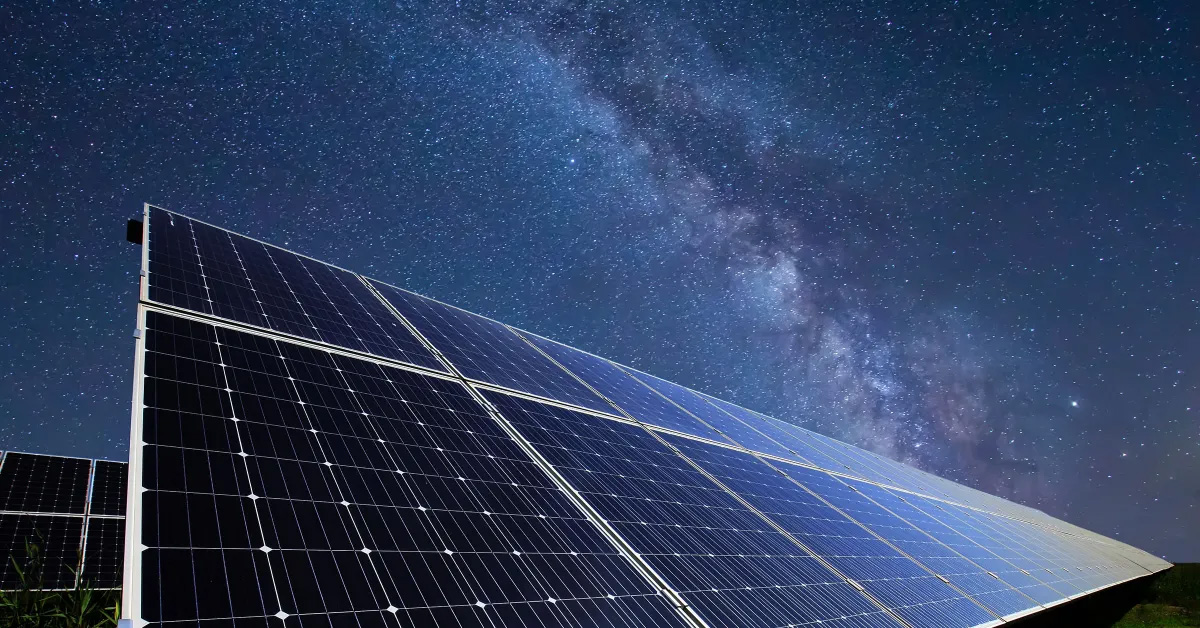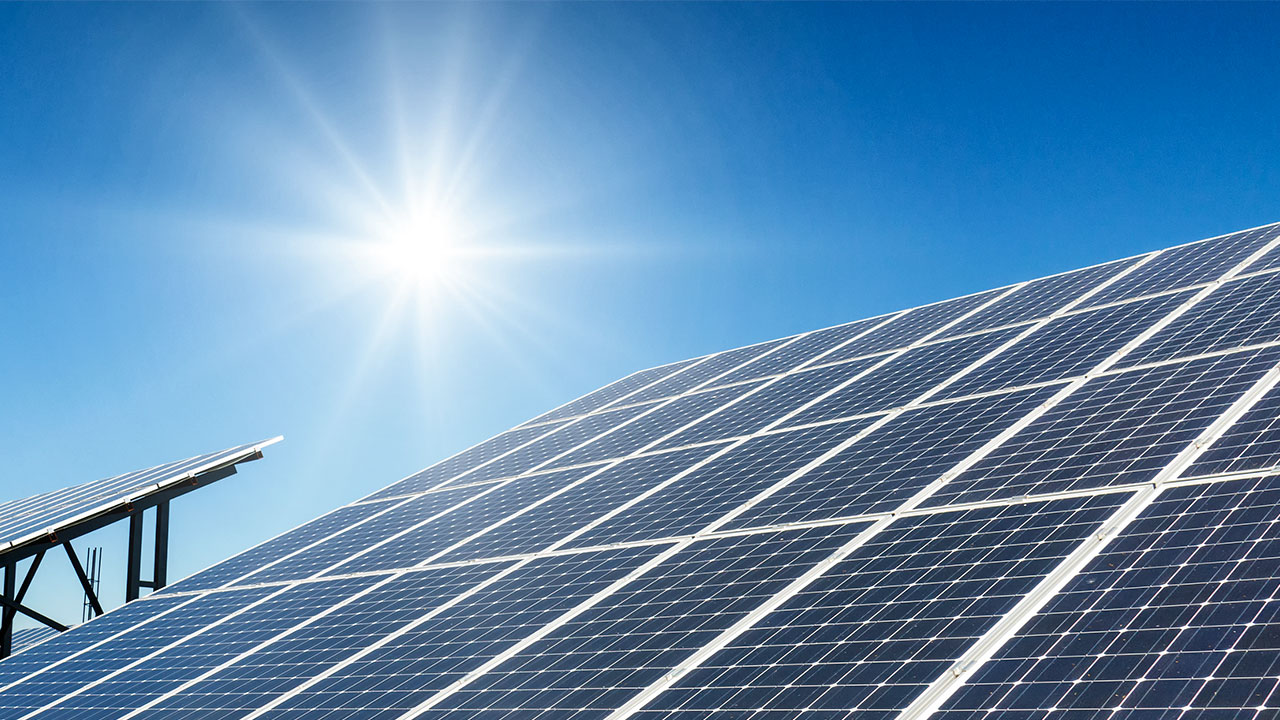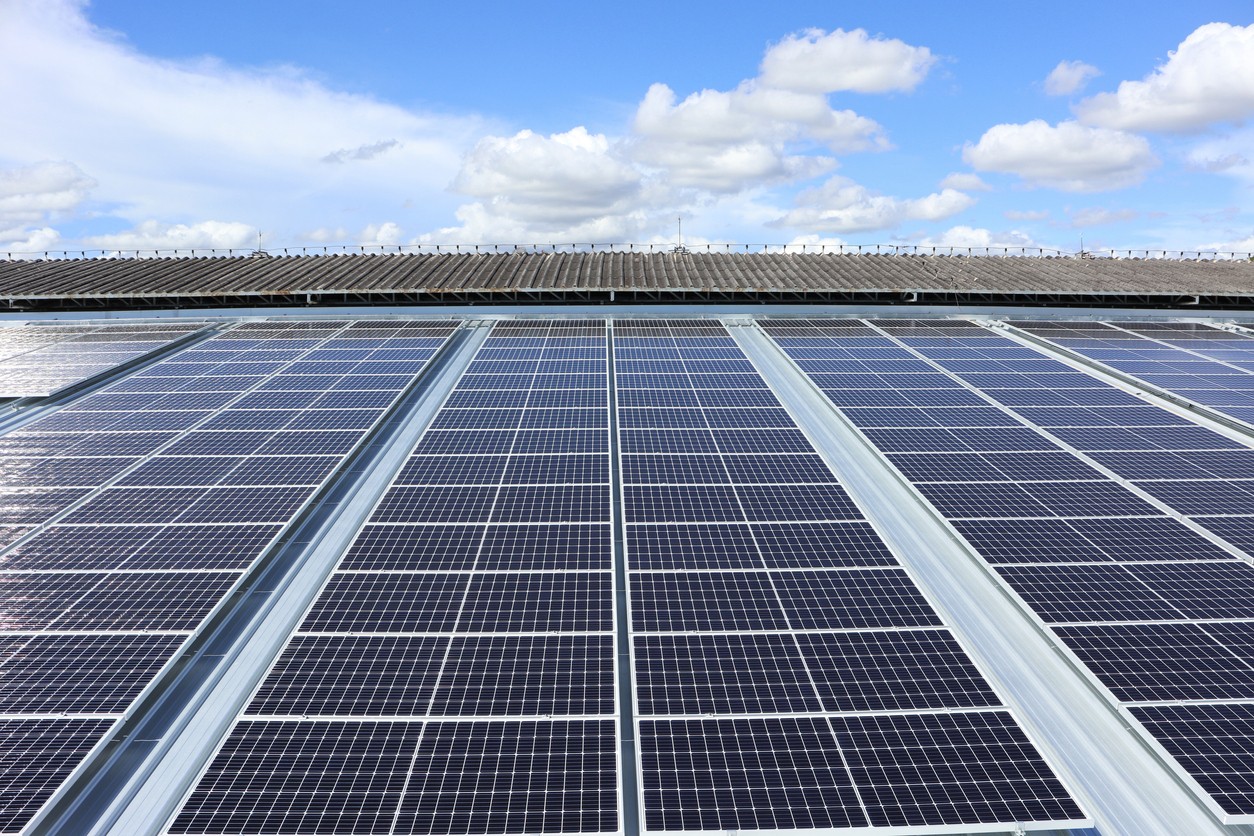Solar battery modules mainly have five types: monocrystalline, polycrystalline, thin-film, building-integrated photovoltaics (BIPV), and high-efficiency modules. Monocrystalline modules have an efficiency range of 15% to 22%, making them suitable for small residences; polycrystalline modules have an efficiency of 13% to 18%, suitable for large power plants. Thin-film modules typically have an efficiency of 10% to 12%, offering strong flexibility and suitability for curved installations. BIPV modules are integrated into building materials, with an efficiency of 12% to 16%; high-efficiency modules can reach over 25% efficiency, making them suitable for space-limited scenarios.
Monocrystalline Solar Modules
Monocrystalline solar modules are one of the most efficient types of modules. Made from high-purity silicon crystals, these modules look dark black and have a great ability to absorb light. Monocrystalline modules have an efficiency that typically varies between 15% and 22%; therefore ideal for installments where space is limited but high conversion efficiency is valued.
Monocrystalline modules usually have a power output between 300 watts to 400 watts and are the best type of solar panels for small residential or commercial applications. Twenty square meters of roof, the use of efficient monocrystalline modules 300 watts, it can produce about 5,000 kWh annually. As a result, it successfully eliminates electricity costs and the reliance on traditional power sources for end-users.
Crystalline modules that monocrystalline are the best at performing under low light and have a lower power degradation rate than others. This also means that monocrystalline panels can provide consistent power output even on overcast days or in areas where the level of sunlight is below average. This is especially crucial for anyone who lives in a cloudy or rainy part of the world.
Polycrystalline Solar Modules
Polycrystalline solar modules have a number of silicon crystals and typically look blue. as well as dark blue. They are inexpensive to produce and most of them have an efficiency between 13% to 18%. They are less efficient than monocrystalline modules, but due to the inexpensive nature of their manufacturing process, they work very well for utility-scale solar power plants.
Polycrystalline modules usually have an output power of 250W to 320W; it is a good option for commercial or large-scale projects. In a large solar power plant, polycrystalline modules can be used, reducing initial investments and potentially giving an additional 20% return on investment of the system. Most installations need thousands of these modules in order for communities and industrial parks to be powered cleanly from the sun.
The stability of polycrystalline modules also allows them to perform well in long-term use. With proper maintenance, the lifespan of these modules can reach over 25 years, usually without significant performance degradation. This is a very important consideration for users seeking long-term investment returns.
Thin-Film Solar Modules
Thin-film panels use a small amount of photovoltaic material in the form of a thin coating on an immediately available substrate. The most commonly used in thin films are back-contacted copper indium gallium selenide (CIGS), cadmium telluride (CdTe) and organic photovoltaic material. The thin-film modules are lightweight, so a roof can be more structurally accommodating to the area in which they are installed, but due to their extremely efficient tracking, they still offer outputable electricity.
Thin film modules are only 10–12% efficient the efficiency of these is very low. They are, however, extremely light and flexible so they can perform very well in certain applications. This gets down to thin-film modules that can be used in a way where space otherwise would be wasted on your car or in a handheld device, where you could incorporate some photovoltaic functions and enhance energy independence.
Compared to the conventional type, thin-film modules are more environmentally friendly in terms of the manufacturing process since material wastage is minimized. When it comes to sustainable development the thin-film modules are beneficial as they consume a relatively small amount of energy during production as opposed to the traditional modules. Especially in large mass production, the manufacturing costs of thin-film modules are much lower than other types, and many cost-driven markets can afford them.
BIPV (Building-Integrated Photovoltaics) Modules
BIPV Modules are a blend of Photovoltaic technology and Building materials that make a new type of solar module. Typical application of these modules in the construction industry, providing not only structural integrity but also power generation ability, makes the module a great candidate for incorporation into new building design, enhancing energy self-sufficiency for a building.
BIPV modules are usually 12% to 16% efficient. While this is less than what conventional modules generally cost, the dual utility of building integrated PV ends up saving even more on extra materials when designing a building. The use of BIPV modules on a surface of 100 square meters on a building generates about 7,000 kilowatt-hours per year, which greatly increases the energy self-sufficiency of the building.
The modern architectural project often uses BIPV modules as standard due to the aesthetic design, which, in addition to increasing the value of the building on the market. This Not Only Enhances the Overall Aesthetic Appeal of the Building but Also Helps in Cost-Effective Energy Savings. People are now more into environmentally friendly and energy saving buildings, so PV technology could be a part of new or renovated projects if we do have plenty of architects signed in.
High-Efficiency Solar Modules
High-efficiency solar panels are created with the use of newly developed and adapted materials as perovskite or high-efficient mono silicon. These modules can reach efficiencies above 25%, albeit for everyone. These are quite handy where space and high efficiency are a concern.
High-efficiency modules can be 400 W or even higher to reduce the number of modules of this size that need installing (saving on installation and maintenance). On a 40-square-meter roof in a small residence, deploying high-efficiency modules can generate roughly 8,000 kilowatt-hours of electricity per year.
High-efficiency modules based on innovative technologies, such as perovskite solar cells, are quickly improving and are predicted to reduce cost and improve efficiency in the near future significantly. This translates into increased capacity and reduced-cost solar energy solutions for consumers in the coming years.
Module Type | Efficiency Range | Output Power | Application Scene | Lifespan |
Monocrystalline | 15% - 22% | 300W - 400W | Small residential, commercial uses | 25+ years |
Polycrystalline | 13% - 18% | 250W - 320W | Large solar power plants, commercial projects | 25+ years |
Thin-Film | 10% - 12% | 100W - 200W | Building surfaces, portable devices | 20+ years |
BIPV | 12% - 16% | 100W - 300W | Modern buildings, green building design | 20+ years |
High-Efficiency | 25%+ | 400W and above | Space-limited, high-performance situations | 25+ years |



